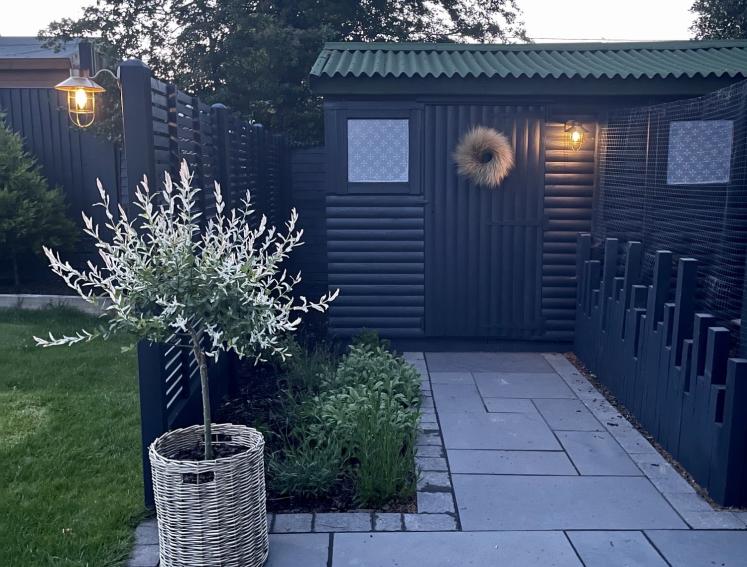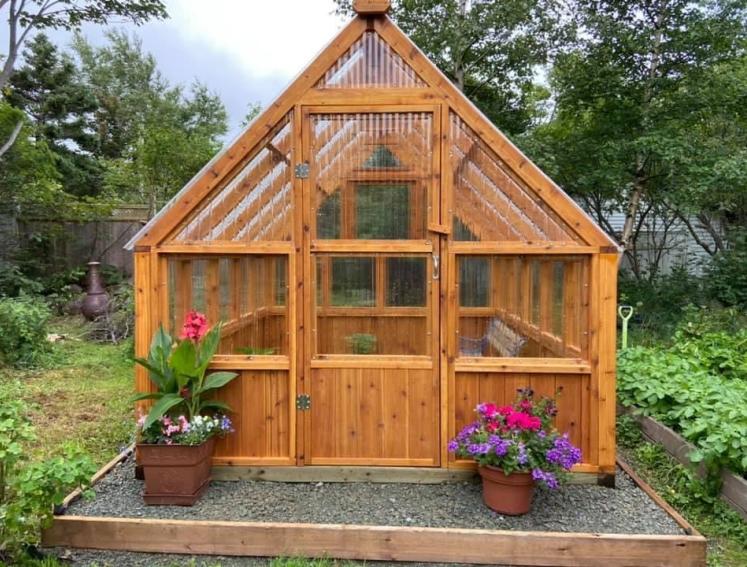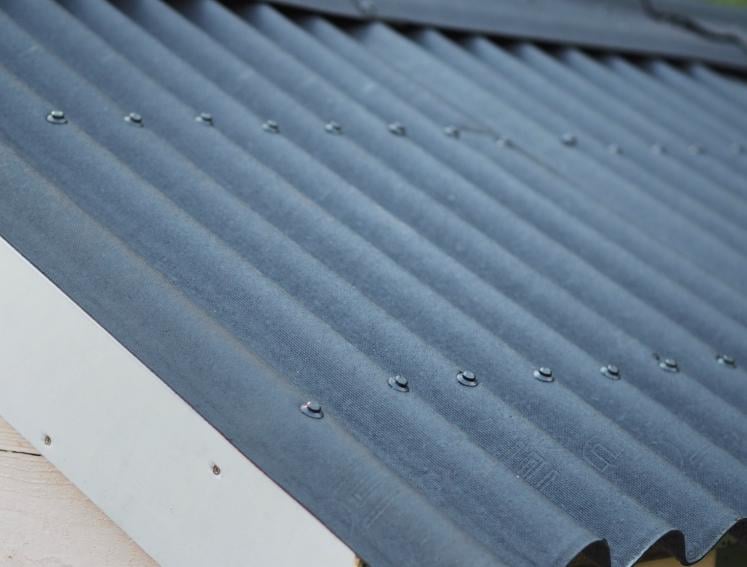Winter-proof your garden shed with our top tips on how to insulate it in time for the super cold and wet weather!
With the winter months approaching you might be thinking about how you can winter-proof your garden, including your shed! Your garden shed is an important storage space, and not one to be overlooked. Whether you use it for storing tools, your lawnmower, or perhaps even as a reading nook or home office, you’re going to want to ensure that your possessions are protected from the elements as we head into the colder, wetter weather.
Keep reading for a full guide on how to insulate your shed, keep the damp at bay and the roof in tip-top condition…
Do I need to insulate my shed?

We'd recommend it!
If you own a wooden shed that you frequently use, the simple answer is yes! Not only will it make for a more comfortable environment during both the summer and winter months, but it will also reduce your heating bills if you run power to the shed and use it as an office or perhaps even a home gym. Insulating your shed can also protect the structure, adding longevity to your shed as well as protecting the contents
What are the pros and cons of insulating my shed?
There are many benefits to insulating your shed! Firstly, you’re protecting the structure from dampness and mould which can become quite a serious issue when left untreated. Whether you use your shed sporadically as a workshop or spend considerable time in there, you don’t want to be dealing with any damp issues as this can also lead to further deterioration of your shed including structural problems and rot. In this case, prevention is much easier than cure, so insulation is key.
Another great reason to insulate your shed is to protect the items inside which is particularly important if you store any electrical or possibly even sentimental items in your shed. By insulating your building, you will provide a more consistent temperature and one that is not likely to damage any of your possessions through exposure to extreme hot or cold temperatures.
Lastly, an insulated shed will also minimise noise pollution which is ideal if you use it as a workspace or relaxation room. You can also drown out those noisy neighbours and enjoy a little peace and quiet.
What is the best insulation material to use for my shed?
There are quite a few options when it comes to selecting an insulation material for your shed. Here are a few of the most commonly used:
- Fibreglass wool - this is often used as an insulation material in new build homes and is also suitable for sheds
- Mineral Wool - instead of fibreglass you could opt for mineral wool which offers both performance and longevity. It’s also denser than fibreglass wool which improves the acoustic qualities
- Boarding - another option is foam board. These can be cut to size and are also available in a variety of thicknesses, which means if you use your shed as a home office you could opt for the thicker option in order to keep noise at bay
- Bubblewrap - this can be a cost-effective option, but we don’t mean your average bubble wrap that you might find in packaging. Instead, a foil-backed bubble wrap material is best. This is a budget-friendly insulation material that’s also easy to fit
How do I insulate my shed?
Insulating your shed may be easier than you think, but it does depend on what material you decide to use. We’re breaking down a quick guide to insulating your shed with the above materials:
How to insulate a shed with fibreglass wool
- Cut open the bag of material and let the batts expand
- Place the fibreglass wool insulation in between wall studs
- Cover the fibreglass wool with MDF boarding and screw it into place
How to insulate a shed with mineral wool
- Cut open bags of mineral wool in order to let the batts expand
- Place the mineral wool insulation in between wall studs
- Cover with the mineral wall with MDF boarding and screw into place
How to insulate a shed with foam boards
- Once you have selected the correct size, simply slide your boards over the panels of your shed’s frame
- If necessary, you may need to trim to size and stick down edges to prevent them from moving
- Finish by covering over with a board of MDF screwing it into place
How to insulate a shed with bubble wrap
- Measure the shed panel in order to cut the bubble wrap to the correct size to fit
- Overlap the bubble wrap strips to avoid as this will avoid any heat escaping through gaps
- Staple the wrapping to your shed
- Place a sheet of MDF boarding over the panel and screw it into place

Insulation helps with this too!
Of course, insulating your shed should help to keep the rainfall at bay, but over time you may notice cracks appear in your walls. For this, you can simply use a caulking gun and fill the gaps to ensure no rain is sneaking in.
Shed roofing
You will also want to consider your shed roof, as this is a hugely important aspect of ensuring your shed is set for winter and beyond!
Firstly, you will need to decide whether you want to repair or replace your shed roof. If you have a traditional felt roof, this can be highly susceptible to tearing which can of course then cause leaks and could = major damage to your property! This leads us to the latter, replacing your shed roof. This may actually be less expensive than you think, especially with our lightweight and DIY-friendly roofing sheets.
Our roofing systems have been designed for DIYers of all abilities, so it doesn’t matter if you’re new to the world of DIY as no specialist tools are required, and you’ll have your new shed roof up in no time.
One of our most popular choices for shed roofing is our CLASSIC system, this is available in four colours and is an eco-friendly choice for your shed. Plus it’s super easy to install - just follow the steps below...
How to install ONDULINE CLASSIC roofing sheets

Grab your tools!
- Lay our ONDULINE CLASSIC roofing sheets over the gutter line with an overhang and lay them in the opposite direction to the wind
- Lay your second row so the first sheet is parallel to the corrugations but not in line with the first
- Fix the sheets at the eaves, overlaps and ridges with the correct fixings
- Fix a verge to the edge for ultimate aesthetic, waterproofing and wind resistance. Fix to the sidewall first and then the roofing sheets with an overlap
And just like that, you will have a shiny new shed roof that will last for years to come, as did you know, all of our roofing comes with a minimum 10-year guarantee? If you want to replace your shed roof with a winterproof alternative, but you’re after something a little different, why not take a look at our ONDVUILLA roof tiles or perhaps our BARDOLINE roof shingles instead?
Ready to start your shed insulation project and get your roofing ready for winter? Our roofing sheets can be purchased via our eShop as well as select ranges available via The Range, Amazon, and Wickes.
Discover the full range at onduline.co.uk.